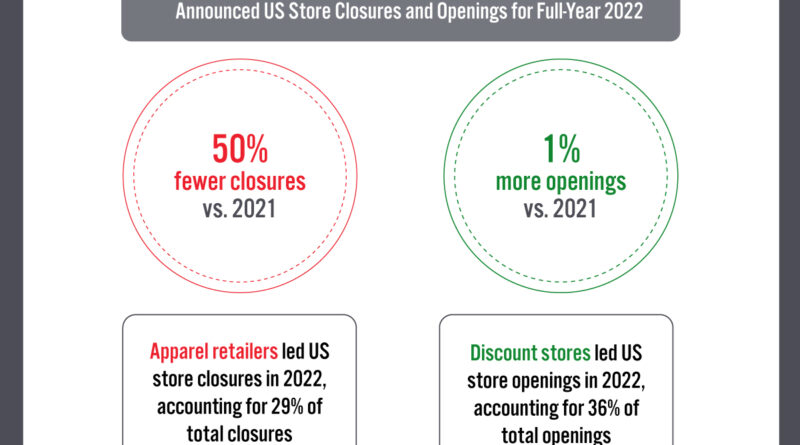Inflation and Shifting Shopping Habits Cause Wave of Store Closures
Influences like inflation and a transformation in shopping habits are leading to a wave of store closures across several retail chains. This ubiquitous impact permeates across different store brands, including Kroger and At Home, with multiple locations expected to close their doors throughout September. The catalyst for these shifts can be traced back to the viral outbreak which has disrupted the retail industry at an unprecedented level, encouraging customers towards e-commerce and away from conventional, physical stores.
A report by real estate services company, Green Street Advisors, predicts that roughly a quarter of the major shopping centers in the U.S. may shut down in the upcoming six years. September is witnessing the closure of an array of retail brands, including several brick-and-mortar outlets of various entities. Among these, At Home, the home décor retailer headquartered in Dallas, will be pulling down the shutters on its stores spread across a dozen states by the end of the month.
Despite having an impressive portfolio of over 250 stores nationwide, At Home’s number will shrink by 26 as the company is closing outlets that have underperformed in various states. The home decor retailer previously declared Chapter 11 bankruptcy owing to its struggle with a debt mounting to $2 billion.
Kroger, the renowned supermarket chain, is also not immune to these fluctuations in the retail industry. They have planned to close two locations on September 19. The stores that will cease operations are situated at South Cummings Street in Abingdon, Virginia, and East Stone Drive in Kingsport, Tennessee.
The closures emerge from an intricate crisis precipitated by an equilibrium between pleasing Wall Street investors and providing for its consumer and employee base. The Union President Mark Federici emphasized the adverse fallout of shutting these stores, which extends from availability of good union job opportunities to access to food in sparsely populated regions where grocery alternatives are scarce. He articulated concern that these closures, while providing a nominal financial boon to Kroger, will indeed negatively impact the communities served by these stores.
Kroger finds itself entrapped in a challenging landscape post the unsuccessful attempts to merge with Albertson’s last year. The debacle not only led to breach of contracts with Albertson’s but also with other grocery chains involved in the merger that didn’t materialize. Accusations of deceptive practices and price fixing, coupled with sudden exit of its CEO due to an ethics probe, are additional hurdles the company is dealing with.
Complementing these issues is external pressure from online grocery competitors and change in consumer preference for e-commerce over physical shopping. These factors compel Kroger to scale back and shift its attention to its most profitable stores under their parent brand and its sister brands such as Mariano’s, Pick’n Save, and Harris Teeter.
Even in the realm of fashion and jewelry, retail store giant Claire’s is facing its own share of adversities. The company declared bankruptcy in August, its second occurrence since 2018. The chain is grappling with $690 million debt driven by stiff competition in the market, amplified mall rents, and product price inflation due to tariffs.
Despite operating in excess of 2,300 outlets around the globe, the jewelry and accessory retailer now encounters the daunting prospect of closing all its locations if a buyer cannot be found. As the retail sector moves swiftly toward 2025, companies are rigorously scrutinizing their financials, seeking to understand which outlets are not economically viable and devising solutions to enhance their bottom line.
A rather simplistic outlook, albeit poignant, is that some retailers are opting to close their less profitable outlets. There could be myriad reasons behind this unrelated to social or crime-related factors. Ultimately, it is the profitability and the financial logistics of maintaining the operations of these individual stores that serve as the determining factor.
A potential negative result of this consolidation in the retail market is the projection of harmful effects on consumers. Price inflation and limited competition stand to negatively affect consumers’ shopping experience, possibly leading to increased expenditures. In effect, customers might bear the brunt of these higher costs in the retail environment.
The affected stores are set to close by September’s end, so shoppers can foresee the disappearance of these familiar chains. As the time for closure approaches, these retailers are likely to host ‘closing down’ sales in a bid to dispose of their remaining stock. An unfortunate sign of the times, but perhaps consumers can find savings as the stores liquidate their goods.


